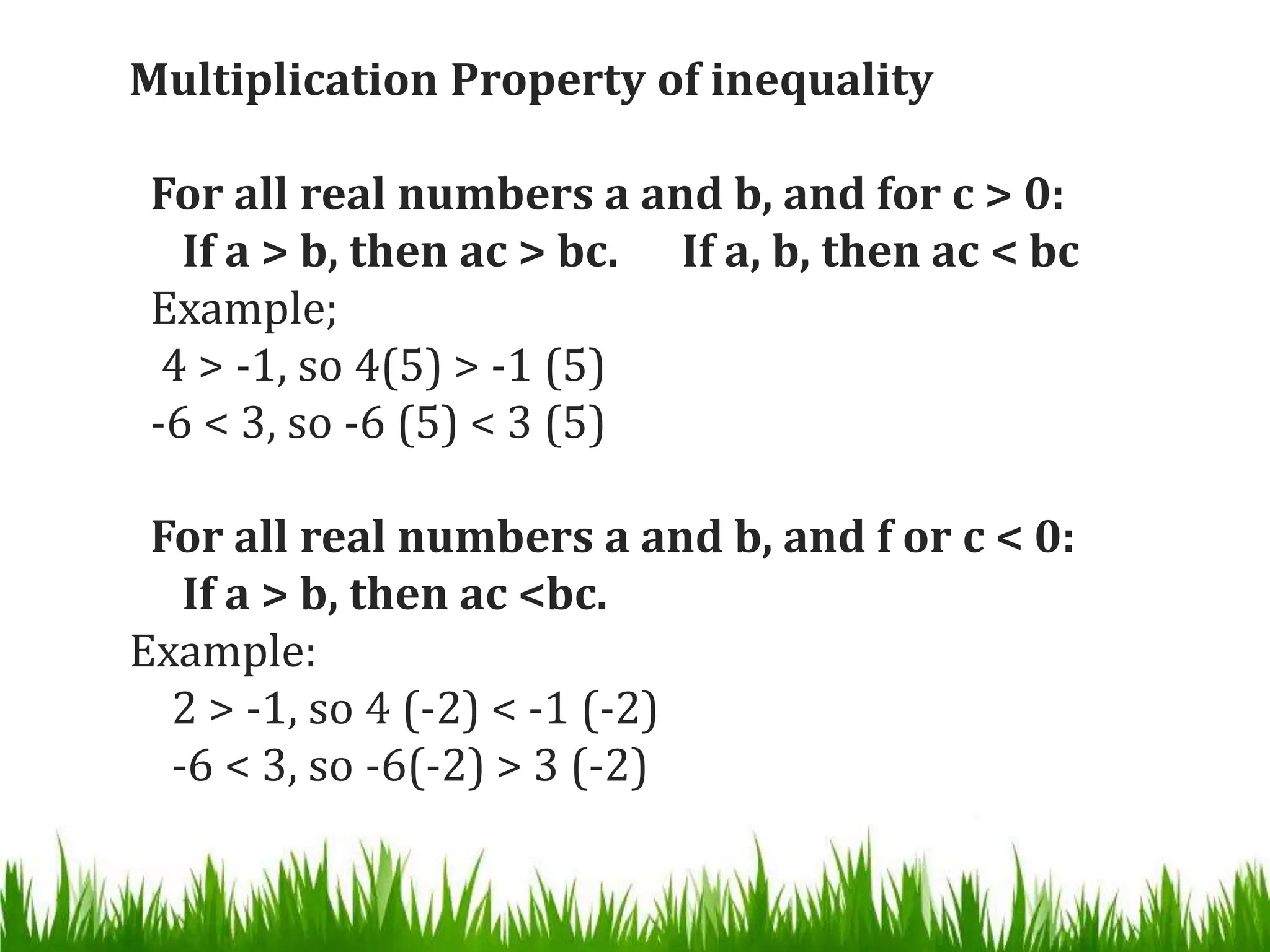The document provides steps and examples for solving various types of word problems in algebra, including number, mixture, rate/time/distance, work, coin, and geometric problems. It also covers solving quadratic equations using methods like the square root property, completing the square, quadratic formula, factoring, and using the discriminant. Finally, it discusses linear inequalities, including properties related to addition, multiplication, division, and subtraction of inequalities.























































![INTERVAL
NOTATION
INEQUALITY
NOTATION
LINE GRAPH TYPE
𝑎 , 𝑏 𝑎 ≤ 𝑥 ≤ 𝑏 [ ] Closed
[ 𝑎, 𝑏) 𝑎 ≤ 𝑥 < 𝑏 Half – open
( ]a, b 𝑎 < 𝑥 ≤ 𝑏 ( ] Half – open
𝑎, 𝑏 𝑎 < 𝑥 < 𝑏 ( ) Open
[ 𝑏, ∞) 𝑥 ≥ 𝑏 [ Closed*
𝑏, ∞ 𝑥 > 𝑏 ( Open
(−∞, ]𝑎 𝑥 ≤ 𝑎 Closed*
−∞, 𝑎 𝑥 < 𝑎 ) Open
x
x
x
x
x
x
] x
x](https://image.slidesharecdn.com/advancealgebra-151015094742-lva1-app6892/75/Advance-algebra-56-2048.jpg)












































































